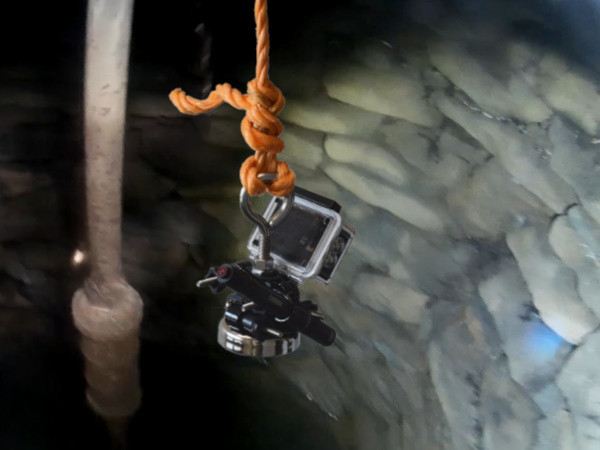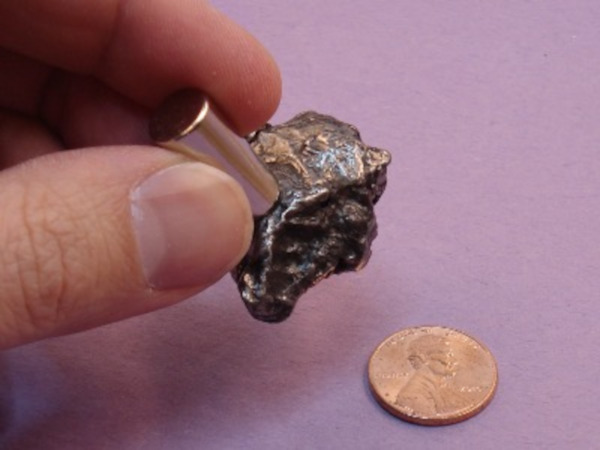How Strong are Fishing Magnets?
The raw power of fishing magnets showcased through lab testing and real life demonstrations
1. Magnet fishing overview
We have a more comprehensive Magnet Fishing Guide in our previous article, but for those of you that have not yet had a chance to read it, below is a recap of what magnet fishing is.

Magnet fishing is an outdoor activity where enthusiasts use a strong magnet to find and retrieve metal objects from bodies of water. It's popular among those who enjoy treasure hunting and environmental conservation. The process involves casting a neodymium magnet attached to a rope into rivers, lakes, or canals and pulling it to recover ferromagnetic materials.
There are plenty of magnet fishing videos online, showing all sorts of treasures found - from lost phones and wallets to old war relics! The possibilities of what you might find are endless. Watch K&J's magnet fishing and relic hunting with fishing magnets adventures.
2. New line of magnet fishing magnets!
We now have 6 powerful fishing magnets in stock, 2 different styles in 3 different sizes/strengths. Our FM1 fishing magnet style has a beefy eye bolt on the top, while the FM2 style has the same eye bolt on the side, to allow for a double-sided fishing magnet. All of our fishing magnets come with lock washers, though it couldn't hurt to add some thread-lock as well.
Our 3 sizes of fishing magnets have 230lb, 400lb and 500lb of power! The double sided fishing magnets have that amount of strength per side. We designed these magnets to have a thicker steel cup compared to our normal mounting magnets, which provides an increase in strength and allows for the eye bolt to be threaded deeper into the cup.
Single-sided fishing magnets (FM1)
Double-sided fishing magnets (FM2)
Shop Fishing Magnets
Check out our selection of strong fishing magnets and get that big catch!



3. How strong are our fishing magnets?
The strength of fishing magnets varies. The pull force we list assumes the magnet is attracting to a large, flat, dry, steel plate. It is the force required to pull the magnet straight off the steel plate. Another way to look at it would be if you stick our FM1-48 fishing magnet to an overhead I-beam, you could hang 230lb straight down from it before it broke loose.
The strength from a magnet depends on the object it's attracting to, and how far apart the magnet and object are. The power would be less to a smaller ferrous metal object. The pull force would also be less if there was something between the magnet and the object, like a layer of mud.
Testing how much our fishing magnets can lift
Let's do some testing to see how strong a fishing magnet will be in real life situations. In magnet fishing, you'll probably never be directly attracting to a nice large, flat, dry piece of steel, and pulling straight on the magnet so we designed the below tests to simulate more of what someone would actually experience when going magnet fishing.
Testing single-sided fishing magnets
First we tested single-sided fishing magnet attraction strength to three different objects; a wrench, steel rod, and a thin piece of sheet steel (think old license plate).
-
Lifting power: This test is designed to see how much force it takes to pull a fishing magnet directly off the object in a straight lift. This simulates dock fishing, fishing from a fixed location on a boat, or when reeling in the object to the waters surface where the object is lifted straight up.
| Fishing Magnet | Magnet Strength | Steel Rod | Thin Steel | Wrench |
|---|---|---|---|---|
| FM1-48 | 230 lb | 24.2 lb | 10.2 lb | 57.2 lb |
| FM1-60 | 400 lb | 28.4 lb | 11.8 lb | 43.8 lb |
| FM1-75 | 500 lb | 30.8 lb | 12.2 lb | 44.8 lb |

Wait a second, why does the weaker FM1-48 fishing magnet have a stronger pull force to the wrench than the two stronger fishing magnets? It does seem strange, we were surprised to see this and triple-checked our numbers. However, magnetically, it is explainable. The field of these fishing magnets is extremely strong at the edges more so than the middle of the magnet. Since the FM1-48 fishing magnet is a bit smaller in diameter, more of the edge is on or close to the wrench, compared to the larger magnets.


How would these numbers decrease if there was a gap between the magnet and the object? Let's look at the FM1-48 magnet attracting to the wrench. If the two were separated by a gap of 1/16", the pull force decreases to around 18 lb. Keep this in mind if the area you are fishing has a lot of muck and mud!
Testing double-sided fishing magnets
Next we tested out the double-sided fishing magnets. Since they don't have a hook in a position that would allow you to pull straight away from the magnet face, we designed two tests:
-
Leverage: This test is designed to see how much force it takes to pull a fishing magnet off the object it is attracting to. This simulates pull on a rope once the magnet has caught something.
-
Friction: This test is designed to see how much force it takes to slide a fishing magnet off the object it is attracting to. This simulates the magnet being pulled sideways in relation to the object and how much it will hold before slipping off.
| Fishing Magnet | Magnet Strength | Leverage | Slide |
|---|---|---|---|
| FM2-48 | 230 lb | 53.8 lb | 47.6 lb |
| FM2-60 | 400 lb | 93.6 lb | 82.8 lb |
| FM2-75 | 500 lb | 117 lb | 103.5 lb |


Fishing magnet strength, size and cost balance
There is some balance between wanting a super strong fishing magnet and getting the cheapest fishing magnet for your needs.
We are often asked if we could supply a 1,000 lb fishing magnet. While it might be feasible, is it worth the extra money? Seeing how a smaller, less expensive magnet has similar pull forces when attracting to smaller ferrous objects, it might change your buying decision. Plus, if that 1,000 lb fishing magnet did get stuck to a sunken I-beam, or an old boat, good luck getting it off!
4. Top 10 factors that affect how strong a fishing magnet is
Below is a list of the 10 most common ways that a fishing magnet will not have the full lifting power that is listed. Magnets can be complicated, so before going on a magnet fishing trip it is best to arm yourself with knowledge to get the most bang for your buck when buying a fishing magnet and of course reel in the best catch ever.
-
Magnet strength: The strength of the magnet has a large influence on how big of an object you can catch, but as explained above, it also depends on the object being picked up and sometimes smaller magnets can pick up larger objects than larger magnets.
-
Magnet size: The size of the magnet greatly affects the power in the above example. The smaller magnet has a stronger attraction to an object because the object size is closer to the magnets strongest edge area.
-
Attracting object: The size of the object the magnet is attracting also matters. If the object is fully saturated with magnetic flux, using a stronger magnet will yield no more power. Also, the magnet will not get full strength unless attracting to an object big enough to absorb all of the flux lines. You will not get 500lb. of pull force on a paperclip!
-
Gap: The gap between magnet and metal object can lower pull strength significantly. This could be mud, seaweed, tree branches or anything between the magnet and metal object.
-
Leverage: Leverage can lower magnet strength if the magnet is being pulled from an angle with a rope. A straight lift would be the ideal situation to limit leverage.
-
Water resistance: When lifting the magnet to the surface, the water also has a weight and will apply force onto the object being lifted. Lifting more slowly can reduce this force.
-
Moving water: If the magnet is being dragged by a boat, the water is churning or there are currents it will be easier for an object to come off the magnet.
-
Friction: A slippery surface on a magnet if oil, mud or any other low-friction substances stick will make it easier for the object to slide off of the magnet.
-
Rope: The strength and handling of the rope play a role in the control and stability of the magnet during fishing. An unstable rope or bad angle will cause leverage which is explained above.
-
Surface Contact: The amount of contact between the magnet and the metal object affects the hold strength. A full, flat contact results in a stronger attachment than a partial or angled contact. In many cases, you are blindly dragging the magnet and it may not grab the object at the most ideal angle for a strong pull force.
5. Photo gallery of fishing magnets lifting heavy objects
In an effort to showcase how strong our fishing magnets are, here are some heavy metal objects being picked up by our fishing magnets...imagine "catching" stuff like this in your local river!
Don't try this at home!


















